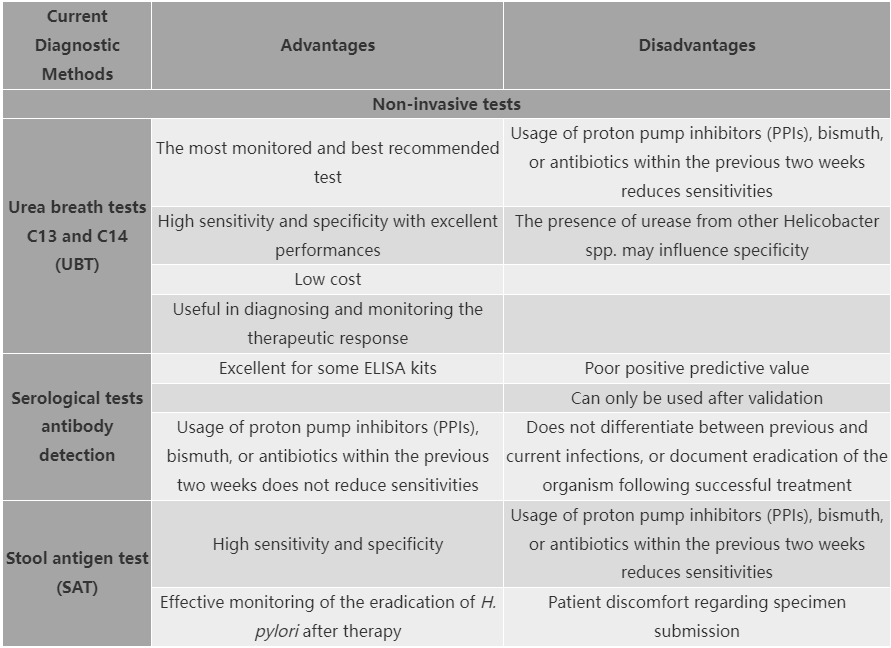Half of the Global Population Carries Helicobacter pylori – Have You Ever Been Tested?
World Digestive Health Day is celebrated annually on May 29th, the main purpose of which is to draw public and worldwide attention to gastrointestinal tract (GI tract) diseases. Of all the diseases, gastroduodenal ulcers are considered to be strongly associated with Helicobacter pylori infection, with more than 90% of the population being infected with H. pylori. Additionally, H. pylori infections also cause diseases such as chronic gastritis and peptic ulcer, and is even closely related to gastric cancer and gastric mucosa-associated lymphoid tissue (MALT) lymphoma.

According to the IARC Monographs on the Identification of Carcinogenic Hazards to Humans published by the World Health Organization, H. pylori infection is responsible for approximately 75% of gastric cancers and 5.5% of all cancers, making it the first bacterium classified as a Group I biological carcinogen in 2012. All factors considered, the diagnosis and eradication of H. pylori infection collectively contribute to gastric cancer prevention.
Not only can H. pylori infection lead to serious consequences, but it’s also the most common bacterial infection across the world. It is estimated that 50% of the global population is infected, with wide geographic variations, ranging from as high as 80% in poor and developing countries to 20-50% prevalence in developed countries. In extension of that, North America is expected to hold a major market share in the H. pylori diagnostics market due to the increasing prevalence of H. pylori infection and its growing awareness of H. pylori infection. According to the National Institute of Diabetes and Digestive and Kidney Diseases (NIDDK), about half of the people over 60 years old and 20% of the people under 40 years old in the U.S. are infected with H. pylori. As a result, the advancement in H. pylori diagnostics and presence of well-developed healthcare infrastructure are largely driving the overall regional growth of the diagnostics market.
As for diagnostic methods, each has its own advantages and disadvantages, and is also subjected to limitations. Screening and laboratory diagnostics are based on both non-invasive and invasive methods. Non-invasive methods include respiratory testing, stool antigens, and serology. Invasive methods include endoscopy, histology, rapid urea tests, culture and PCR tests. The main advantages and disadvantages of these methods are listed below:
Table 1. The main advantages and disadvantages of non-invasive methods [1].

Among non-invasive methods, the respiratory testing with high sensitivity and specificity is used as the gold standard for the diagnosis of H. pylori infection. However, it is expensive and requires special laboratory equipment, and is often a difficult process for elderlies and infants.
Compared with respiratory testing, serology rapid tests are cheaper, more accessible, and much more suitable for at-home self-testing, which is usually preferred by both clinicians and patients regardless of their age. To meet customers’ needs for different antigenic epitopes, Fapon developed several antigens whose epitopes contain CagA, UreA, GroEL(Table 2). A pair of antigens with good detection performance is also recommended for customers’ rapid product development.
Free samples of all antigens are available now and please don’t hesitate to contact us for a free trial.
Table 2. Several antigens for H. pylori serology test recommended and developed by Fapon

As for the stool antigens test, not only does it have high sensitivity and specificity, but can also differentiate between previous and current infections or document eradication of the organism following successful treatment. Since the sample is stool, this method is more suitable for at-home self-testing, thus eliminating discomfort for patients during the process of sample submission.
Antibodies to detect H. pylori antigens in stool will be available soon!
[Reference]
1. Cardos, A. I. et al. Evolution of Diagnostic Methods for Helicobacter pylori Infections: From Traditional Tests to High Technology, Advanced Sensitivity and Discrimination Tools. Diagnostics 12, 508 (2022).






